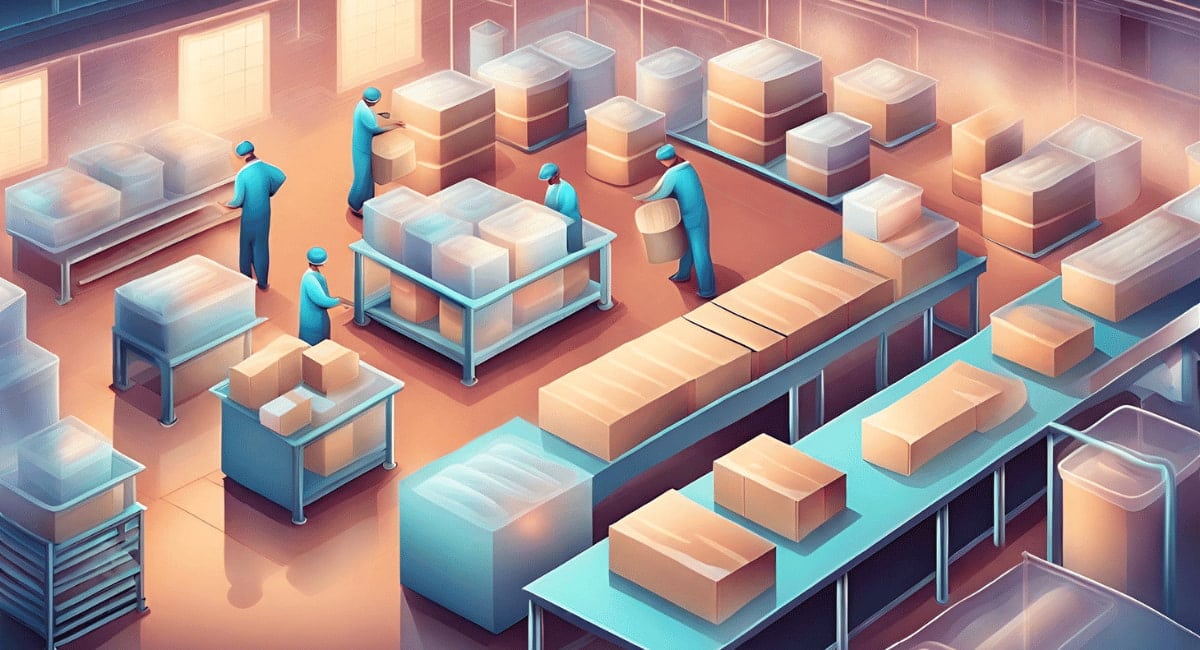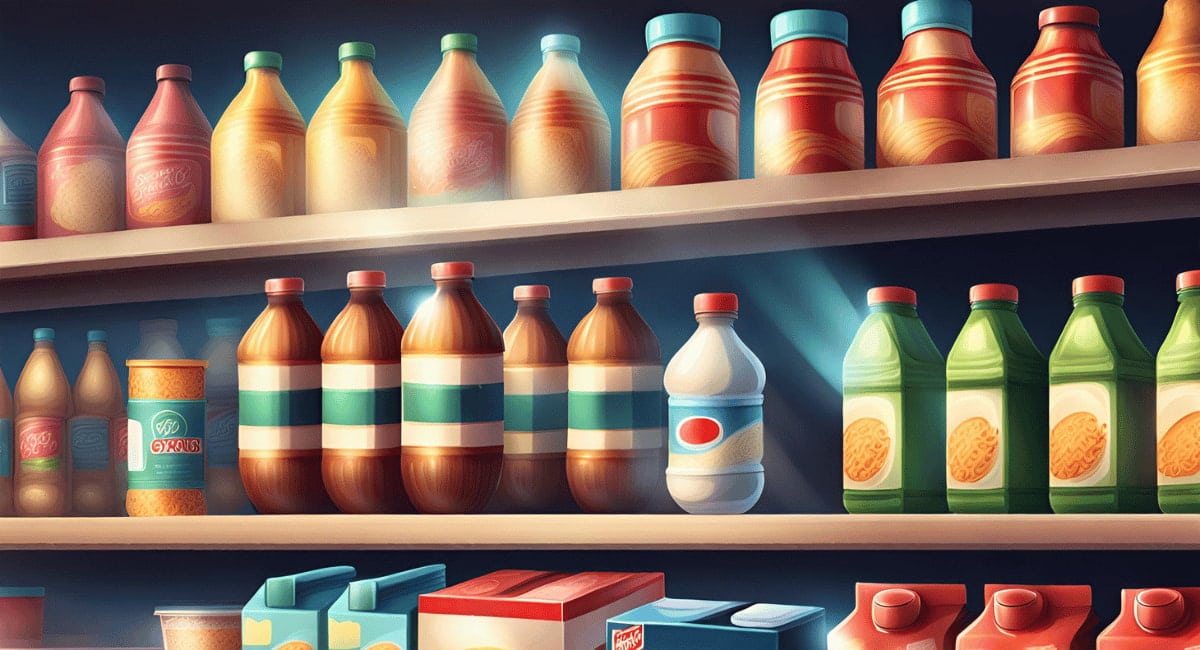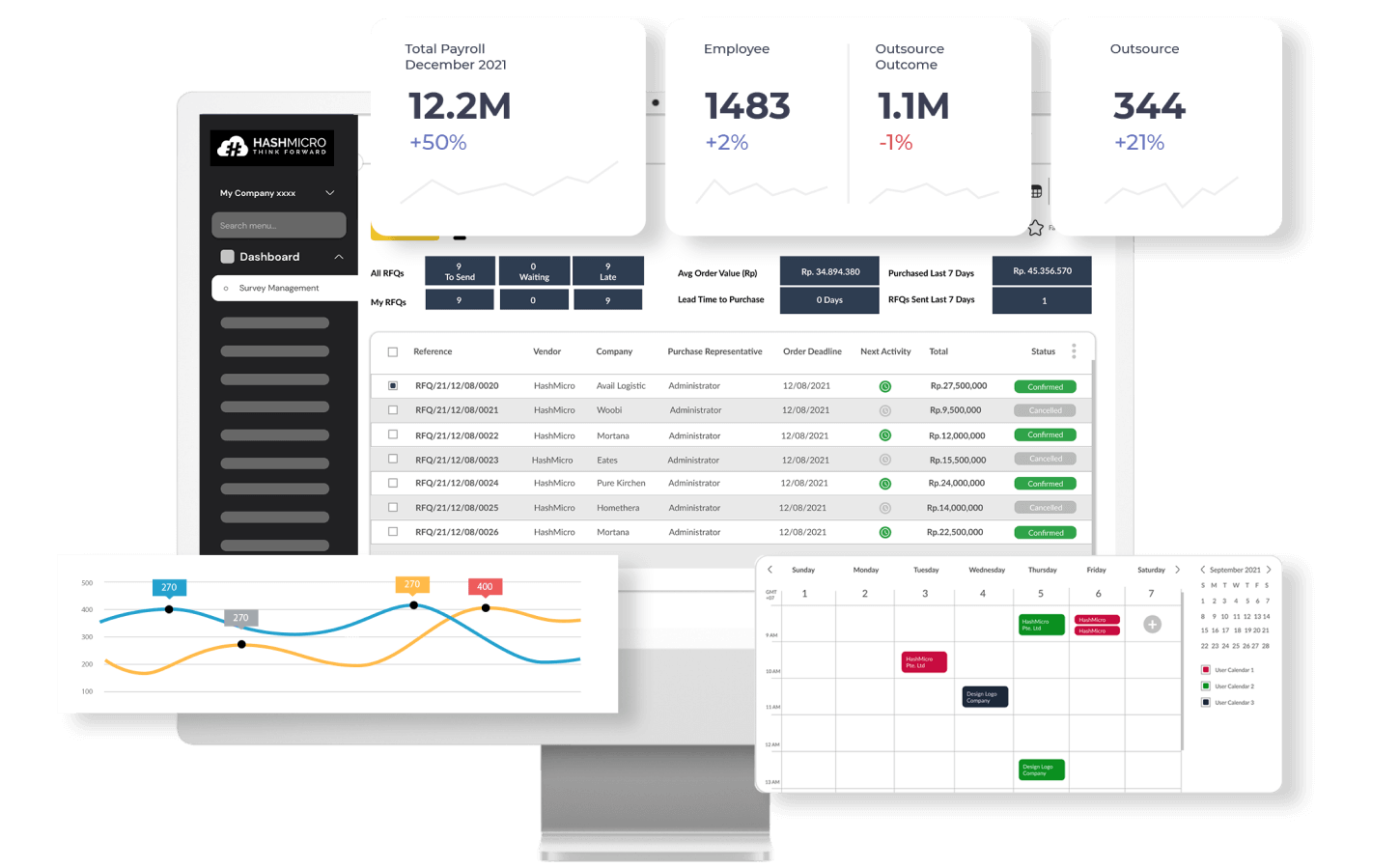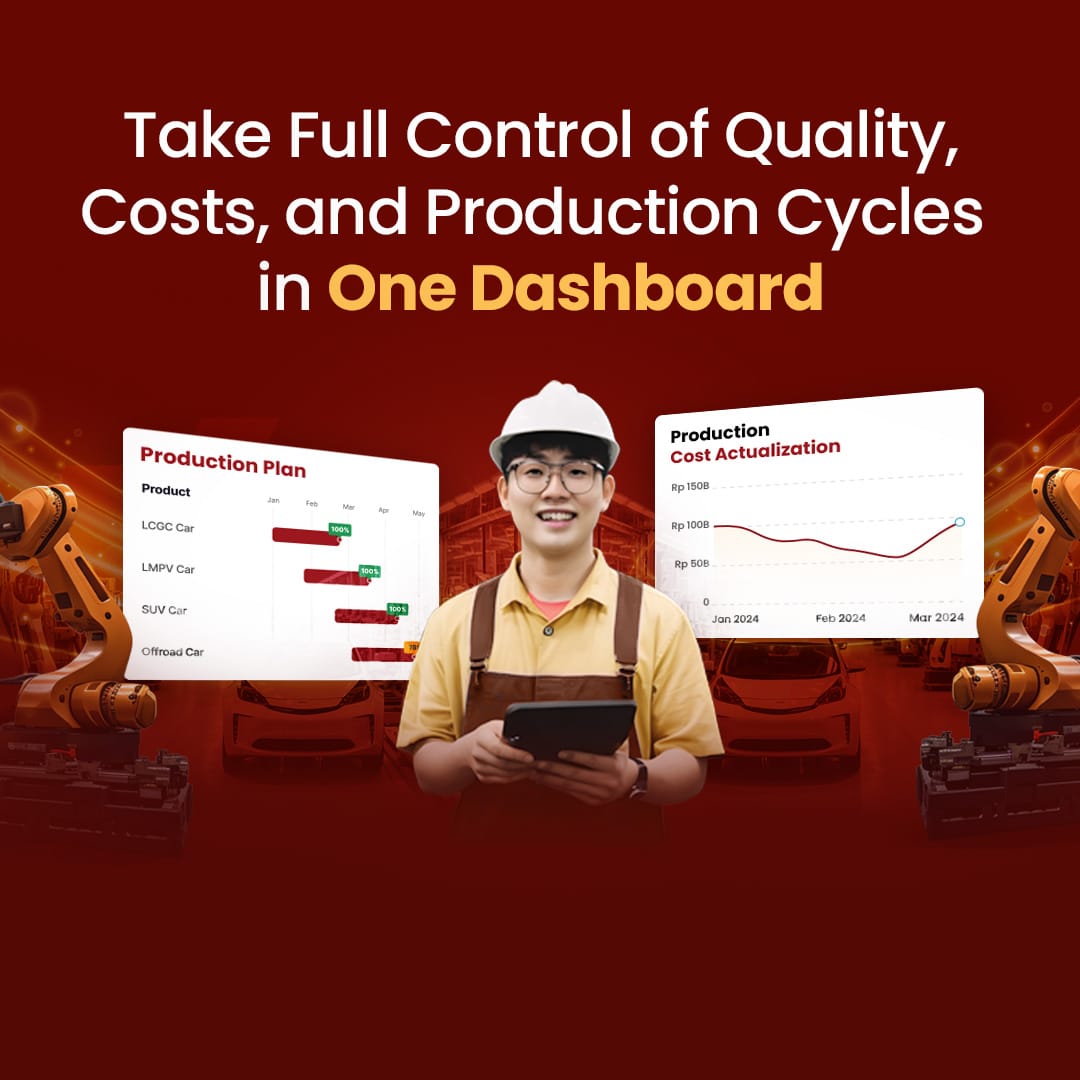Did you know that the global food packaging market is projected to reach a value of $411.3 billion by 2025? With the increasing demand for packaged food and the evolution of consumer preferences, the food packaging industry is undergoing significant transformations.
To stay competitive in this dynamic market, businesses need to embrace technology that are more efficient. Which is why we introduce you HashMicro Manufacturing Software. It enhances food packaging efficiency with features like Production Scheduling, ensuring demand-based planning, and Quality Control, which maintains consistent product quality.
These tools streamline operations, boost productivity, and support business growth. Moreover, the software’s Production Simulation forecasts outcomes to guarantee material availability, while Cost Management tracks expenses, helping businesses reduce waste. Together, these features enhance operational efficiency and drive profitability.
In this article, we will explore the latest trends in food packaging and discuss how innovative solutions, like food packaging production software, can support businesses in meeting evolving consumer demands. Understanding these is crucial for businesses to stay ahead and meet the evolving demands of consumers.
Table of Content:
Table of Content
Key Takeaways
|
Table of Content:
Table of Content

What is Food Packaging?
Food packaging refers to the process of enclosing food products to protect them from contamination, damage, and spoilage. It ensures that food stays fresh during transportation and storage, while maintaining its quality and safety for consumers.
Beyond protection, food packaging serves as a medium for communication. It conveys vital information such as nutritional facts, ingredient lists, expiration dates, and usage instructions, helping consumers make informed choices about the products they purchase.
Food packaging also plays a critical marketing role. The design, colors, and overall appearance of packaging can attract attention, build brand identity, and influence purchasing decisions, making it a powerful tool for businesses in competitive markets.
In today’s market, food packaging goes beyond functionality. It addresses sustainability concerns, enhances convenience, and improves the overall consumer experience through innovations such as smart packaging, minimalist designs, and personalized solutions.
What are the Benefits of Food Packaging?
Food packaging protects products from external elements such as moisture, bacteria, and physical damage, ensuring they remain safe and high-quality until they reach the consumer. This protection extends shelf life and minimizes food waste across the supply chain.
Proper packaging improves convenience for both retailers and consumers. Features like resealable bags, portion control packs, and microwaveable containers make food easier to handle, store, and consume, aligning with busy modern lifestyles and enhancing user satisfaction.
Effective food packaging strengthens branding and consumer engagement. Through attractive designs and interactive features like QR codes, brands can create memorable experiences, foster loyalty, and differentiate their products from competitors in a crowded market.
Lastly, sustainable food packaging contributes to environmental responsibility. By using recyclable, biodegradable, or compostable materials, businesses reduce their ecological footprint, support corporate social responsibility goals, and appeal to environmentally conscious consumers.
Why is Sustainable Food Packaging Important?
Sustainable food packaging plays a crucial role in minimizing the environmental impact of the food industry, which is responsible for a significant portion of global waste. By shifting to biodegradable, recyclable, or compostable materials, companies can reduce the amount of plastic and other non-degradable materials in landfills.
This transition not only helps in conserving natural resources but also reduces pollution, contributing to a healthier planet. Additionally, sustainable packaging often involves the use of fewer materials or more efficient designs, which can lead to reduced transportation costs and lower carbon emissions.
In the food industry, sustainability extends beyond packaging to include efficient waste management practices. For companies aiming to lead in both areas, integrating strategies for removing BOD from wastewater effectively is critical. These processes not only help maintain regulatory compliance but also support environmental goals by significantly minimizing ecological footprints.
What are the Trends in Food Packaging?
In this section, we will highlight the key trends in food packaging, including sustainable packaging, minimalist design, interactive packaging, personalization, transparency, and eco-friendly solutions. These trends are shaping the way food products are packaged and delivered to consumers, providing both practical and aesthetic benefits.
- Sustainability becomes an increasingly important concern for consumers, sustainable packaging solutions are gaining traction in the industry. From biodegradable materials to compostable packaging, brands are adopting eco-friendly alternatives to reduce their environmental impact.
- Minimalist design is another prominent trend in food packaging, focusing on simplicity and clean aesthetics. Minimalist packaging not only provides a visually appealing experience for consumers but also reduces waste by using fewer materials.
- Interactive packaging engages consumers through technology and unique experiences. QR codes, augmented reality, and interactive games are just a few examples of how brands are adding a new dimension to their packaging, enhancing consumer engagement and brand loyalty.
- Personalization is a growing trend in food packaging, allowing brands to create customized packaging for individual customers. From personalized messages and names to tailored designs, this trend enhances the consumer experience and creates a sense of exclusivity.
- Transparency is key in food packaging, with consumers demanding clear information about the product and its packaging. This includes ingredient lists, nutritional information, allergen warnings, and sustainable certifications. Transparent packaging allows consumers to make informed choices while building trust and credibility for the brand.
- Eco-friendly packaging solutions are becoming more prevalent, driven by the need to reduce waste and environmental impact. From recyclable materials to innovative packaging designs that promote reuse, brands are actively seeking eco-friendly alternatives to traditional packaging.
By embracing these trends, food packaging companies can meet the evolving demands of consumers while promoting sustainability, engagement, and personalized experiences. The table below provides a visual summary of the key trends in food packaging:
| Trend | Description |
|---|---|
| Sustainable Packaging | Environmentally friendly packaging solutions that reduce environmental impact. |
| Minimalist Design | Clean and simple packaging aesthetics with a focus on reducing waste. |
| Interactive Packaging | Packaging that engages consumers through technology and unique experiences. |
| Personalization | Customized packaging tailored to individual customers. |
| Transparency | Clear information about the product and its packaging. |
| Eco-friendly Solutions | Packaging alternatives that promote sustainability and reduce waste. |
How Food Packaging Evolves
As the food packaging industry evolves, innovative technologies are shaping the way products are packaged and preserved. This section explores some of the key innovations that are revolutionizing food packaging.
1. Edible Packaging
In response to the growing concern over plastic waste, edible packaging offers a sustainable alternative. Made from edible materials such as seaweed or starch, this type of packaging can be safely consumed along with the food it contains. Edible packaging reduces waste and provides a convenient and eco-friendly solution for consumers.
2. Active Packaging
Active packaging goes beyond simply containing the product. It interacts with the food to extend its shelf life or provide additional benefits. For example, active packaging can incorporate oxygen scavengers to remove excess oxygen and prevent spoilage, or antimicrobial agents to inhibit the growth of bacteria and extend freshness. This technology enhances product quality and safety.
3. Nanotechnology
Nanotechnology has revolutionized the packaging industry by enabling the development of smart packaging with enhanced properties. Nanomaterials can be used to create packaging that is stronger, lighter, and more durable. They can also be engineered to react to external stimuli, such as temperature or moisture, to ensure optimal product conditions. Nanotechnology opens up new possibilities for packaging design and functionality.
4. Biodegradable Packaging
Addressing the issue of plastic waste, biodegradable packaging solutions provide a more sustainable option. These materials break down naturally over time, reducing their impact on the environment. Biodegradable packaging can be made from plant-based materials, such as cornstarch or sugarcane, which are renewable resources. By using biodegradable packaging, companies can contribute to a greener future.
| Types of Packaging Technology | Key Features |
|---|---|
| Edible Packaging | Sustainable alternative Can be consumed along with food |
| Active Packaging | Interacts with the product Extends shelf life and freshness |
| Nanotechnology | Smart packaging with enhanced properties React to external stimuli |
| Biodegradable Packaging | Reduces plastic waste Made from renewable resources |
Regulations and Standards for Food Packaging
In the world of food packaging, adhering to regulations and standards is crucial to ensure the safety, quality, and compliance of products. Let’s take a closer look at the key regulations and standards that govern food packaging.
1. European Union (EU) Regulations
The European Union has established stringent regulations regarding food packaging. These regulations cover various aspects, including the materials used in food contact, labeling requirements, and overall safety standards. Compliance with EU regulations is essential for businesses that export or sell food products within the European market.
2. International Organization for Standardization (ISO) Standards
The International Organization for Standardization (ISO) has developed globally recognized standards for packaging materials and processes. These standards provide guidelines on aspects such as packaging design, materials testing, traceability, and environmental impact. Adhering to ISO standards ensures that packaging meets international benchmarks for quality and safety.
3. Good Manufacturing Practices (GMP)
Good Manufacturing Practices (GMP) are a set of guidelines that ensure consistent quality, safety, and hygiene in the production of packaging materials. GMP regulations encompass various aspects, including facility cleanliness, personnel training, equipment maintenance, and quality control processes. Following GMP guidelines is vital for maintaining the integrity and reliability of food packaging.
4. The Packaging and Labeling Act
The Packaging and Labeling Act is a legislation that sets forth requirements for packaging and labeling of products in various countries. This act typically specifies information that must be included on food packaging, such as product name, ingredients, nutritional information, allergen warnings, and country of origin. Compliance with this act is essential to ensure accurate and informative packaging for consumers.
5. The Toxic Substances Control Act (TSCA)
The Toxic Substances Control Act (TSCA) is a US federal law that regulates the manufacture and use of chemicals, including those used in food packaging materials. This act aims to protect human health and the environment from potentially harmful substances. Compliance with TSCA ensures that food packaging materials do not contain or release hazardous chemicals.
6. The Safe Drinking Water and Toxic Enforcement Act (Proposition 65)
The Safe Drinking Water and Toxic Enforcement Act, also known as Proposition 65, is a California law that requires businesses to provide warnings regarding the presence of chemicals known to cause cancer, birth defects, or other reproductive harm. Compliance with Proposition 65 is essential for businesses that sell food products in California or have a significant presence in the state.
7. The Canadian Food Inspection Agency (CFIA)
The Canadian Food Inspection Agency (CFIA) is responsible for overseeing food safety and regulatory compliance in Canada. The CFIA ensures that food packaging materials meet established quality and safety standards. Compliance with CFIA regulations is essential for businesses that export or sell food products in Canada.
By adhering to these regulations and standards, businesses can ensure the safety, quality, and compliance of their food packaging. It is essential to stay up-to-date with the latest developments in regulations and continuously assess and improve packaging processes to meet the ever-evolving requirements of the industry.
| Regulation/Standard | Description |
|---|---|
| European Union (EU) Regulations | Regulations governing materials, labeling, and safety in food packaging within the European Union. |
| International Organization for Standardization (ISO) Standards | Globally recognized standards for packaging materials and processes, ensuring quality and safety. |
| Good Manufacturing Practices (GMP) | Guidelines for maintaining quality, safety, and hygiene in packaging production. |
| The Packaging and Labeling Act | Legislation specifying information that must be included on food packaging for consumer understanding and safety. |
| The Toxic Substances Control Act (TSCA) | US federal law regulating the manufacture and use of chemicals in food packaging materials. |
| The Safe Drinking Water and Toxic Enforcement Act (Proposition 65) | California law requiring warnings about chemicals known to cause harm on food packaging. |
| The Canadian Food Inspection Agency (CFIA) | Oversees food safety and regulatory compliance in Canada, ensuring quality and safety of packaging materials. |
Best Practices for Food Packaging Production
In order to maintain efficient food packaging production, there are several key strategies that businesses can implement. By following these tips, companies can effectively meet the demands of their clients, while also prioritizing sustainability and ensuring the quality and safety of their packaging.
1. Research Potential Clients
One of the most important aspects of efficient food packaging production is understanding the needs and preferences of your clients. By conducting thorough research, you can gain valuable insights into their requirements, allowing you to tailor your packaging solutions to meet their specific needs.
2. Communicate The Needs
Effective communication with clients is essential to ensuring that your packaging meets their expectations. Regularly engage with your clients to discuss their packaging requirements, address any concerns or issues, and keep them updated on the progress of their orders. Clear and open communication will lead to improved customer satisfaction and successful collaboration.
3. Consider Sustainability
Sustainability is a growing concern for consumers, and incorporating eco-friendly practices into your packaging production is not only beneficial for the environment, but also for your business. Explore sustainable packaging materials and design options, such as biodegradable or recyclable materials, to align with consumer demands and reduce your environmental impact.
4. Packaging Testing
Testing is crucial to ensure the quality and safety of your packaging. Implement thorough testing procedures to assess the durability, functionality, and suitability of your packaging materials and designs. This will help identify any potential issues or improvements needed, allowing you to provide reliable and high-quality packaging solutions to your clients.
5. Adopt an Automation
Automation can significantly improve the efficiency of your food packaging production processes. By automating repetitive tasks, such as labeling, filling, or sealing, you can reduce errors, increase productivity, and streamline your operations. Invest in advanced packaging automation technologies to optimize your production line and maximize efficiency.
| Tips for Efficient Food Packaging Production |
|---|
| Research potential clients to understand their needs and preferences |
| Communicate effectively with clients to ensure packaging meets their requirements |
| Consider sustainability by utilizing eco-friendly packaging materials and designs |
| Implement packaging testing to ensure quality and safety |
| Adopt automation to increase efficiency and reduce errors |
Streamline Food Packaging Production with HashMicro
HashMicro manufacturing software is the most suitable software for the food packaging industry in Singapore. It offers comprehensive solutions to ensure efficiency, accuracy, and effective inventory management of food packaging software.
This section will discuss how HashMicro manufacturing software optimizes food packaging production processes. By leveraging advanced features and functionalities, this software streamlines various aspects of food packaging production.
The following are several important features of HashMicro Manufacturing Software:
1. Manufacturing Production Scheduling
HashMicro Manufacturing Software provides robust production scheduling capabilities, enabling businesses to plan and organize their manufacturing operations effectively. With the ability to create detailed production schedules, allocate resources, and track progress, this software ensures that food packaging production runs smoothly and on time.
2. Material Requirements Planning (MRP)
Using HashMicro Manufacturing Software, businesses can perform accurate Material Requirements Planning (MRP) to determine the optimal quantity and timing of raw material purchases. By aligning material availability with production demands, this software minimizes inventory holding costs while ensuring smooth production flow.
3. Regulation Compliance
HashMicro’s Manufacturing Software provides regulation compliance feature that are meticulously crafted to keep your business in line with the latest food packaging laws and guidelines. It automates the process of identifying and applying relevant regulations, reducing the risk of non-compliance. This means less time spent on manual compliance checks and more on strategic growth initiatives.
4. Manufacturing Requisition Planning
HashMicro Manufacturing Software facilitates efficient manufacturing requisition planning, ensuring that the necessary materials and resources are available when needed. By automating the requisition process and tracking inventory levels, this software helps businesses streamline their procurement operations and avoid production delays.
5. Made to Order Completion Forecast
The software enables accurate completion forecasting for made-to-order food packaging production. By considering lead times, resource availability, and production capacities, businesses can generate reliable forecasts that help them meet customer deadlines and maintain a high level of customer satisfaction.
6. Manufacturing Quality Control
HashMicro Manufacturing Software includes robust quality control features that ensure the production of high-quality food packaging. Through comprehensive inspection and testing modules, businesses can monitor quality at different stages of the production process, identify potential issues, and take corrective actions to maintain consistent product quality.
7. Finished Goods Production Simulation
With the software’s production simulation capabilities, businesses can optimize their production processes and identify potential bottlenecks or inefficiencies. By running simulations based on different parameters, businesses can make informed decisions to improve productivity, reduce costs, and enhance overall operational efficiency.
8. Production Order & Work Order Tracking
HashMicro Manufacturing Software enables businesses to track and monitor production orders and work orders in real-time. By providing visibility into the status of each order, businesses can ensure timely execution, identify potential delays, and take proactive measures to maintain production schedules and meet customer demands.
9. Multi-Level Bill of Material (BoM)
The software’s multi-level Bill of Material (BoM) functionality allows businesses to create detailed, hierarchical product structures. By accurately defining the components and sub-components required for food packaging production, businesses can streamline procurement, optimize inventory management, and ensure smooth assembly processes.
10. Planning and Actualization Reports
HashMicro Manufacturing Software generates comprehensive planning and actualization reports, providing businesses with valuable insights into their production operations. These reports facilitate better decision-making, resource allocation optimization, and continuous improvement efforts, ultimately enhancing overall operational efficiency.
11. Monitor Warehouse Stock Capacity
With HashMicro Manufacturing Software, businesses can monitor and manage warehouse stock capacity efficiently. By providing real-time visibility into stock levels, businesses can avoid stockouts, optimize storage space, and ensure that the required raw materials and finished goods are readily available for food packaging production.
Hashy AI Fact

Need to Know
AI automates food packaging management, boosting efficiency and minimizing errors. With AI for Manufacturing, optimize production schedules, monitor inventory, and enhance quality control for cost savings and better operations.
Request a free demo today!
Conclusion
Throughout this article, we have examined the latest food packaging technologies and trends, with a particular emphasis on sustainable solutions. The food packaging industry is constantly evolving, and staying up to date with these advancements is crucial for businesses to meet consumer demands and maintain a competitive edge.
It is essential for businesses to embrace these trends and invest in the right technologies. By understanding the latest advancements and adapting their packaging strategies accordingly, businesses can meet the evolving demands of consumers.
There is also a CTC Grants offer that can save you up to 70%, helping reduce the investment burden while adopting cutting-edge packaging solutions.
HashMicro manufacturing software offers the best solution for food packaging production. With various features that support automation in packaging production, manufacturers can enhance their production process. Try the free demo now!

























































